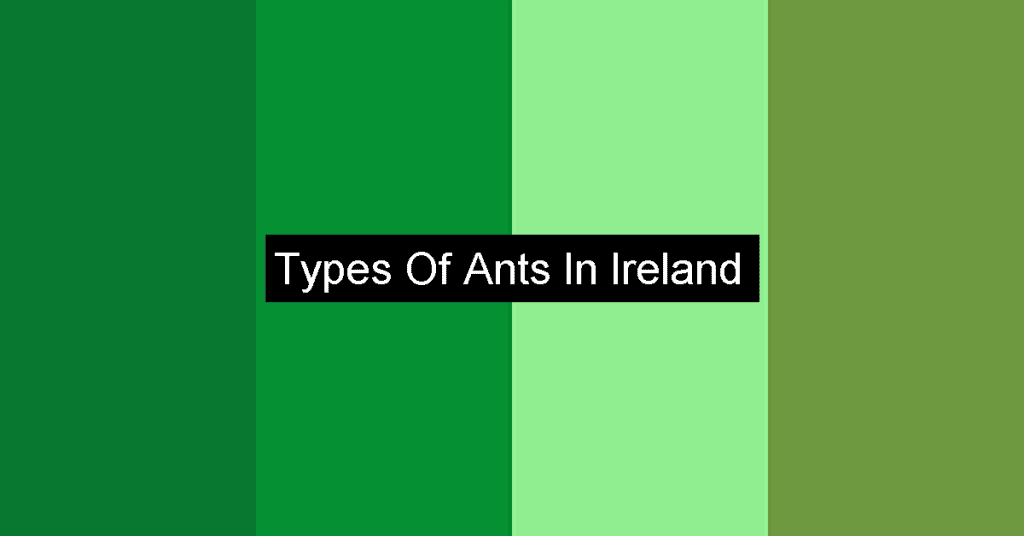Ireland, located in the northwestern region of Europe, is a country known for its lush green landscapes and diverse wildlife. The country is surrounded by the Atlantic Ocean, which greatly influences its climate and weather patterns.
The temperate maritime climate of Ireland is characterized by mild winters and cool summers, with frequent rainfall throughout the year. The country’s varied topography, including mountains, forests, and coastal regions, provides habitats for a wide range of animal species.
From red deer and badgers to otters and seals, Ireland’s wildlife is as diverse as its landscapes. In this article, we will explore the natural environment of Ireland, focusing on its weather patterns and unique animal species.
.
Types Of Ants In Ireland
The Types Of Ants In Ireland are listed here: Anergates, Wood Ants, Formicoxenus, Crypt Ants, Moisture Ants, Leptothorax, Trailing Pharaoh And Timid Ants, Mite-Eating Ants, Furrowed Ants, Amazon Ants, Porthole Ants, Winter Ants, Fire Ants, Leaf-Litter Ants, Strongylognathus, Tapinoma, Slave-Making Ants, Pavement Ants, Silky Ants, Yellow Meadow Ants, Black Garden Ants, Leptothorax Acervorum, Furrowed Ants, Furrowed Ants, Immigrant Pavement Ants.
If you’ve found some other ants in this region, contact us, and we will add them to the list!
1) Anergates

Anergates is a genus of ants that belongs to the subfamily Myrmicinae.
The genus is known for its unique social structure, where the colonies are composed of a single queen and a few dozen workers.
The workers of Anergates are specialized in brood care and nest maintenance, and they do not forage for food like most other ant species.
Anergates ants are small in size, with workers measuring around 2-3 mm in length.
They are typically reddish-brown in color and have a slender body shape.
The ants are known to inhabit a variety of habitats, including forests, grasslands, and wetlands.
One of the most interesting aspects of Anergates ants is their reproductive strategy.
Unlike most ants, where the queen produces both male and female offspring, Anergates queens only produce male offspring.
These males then mate with females from other ant species, and the resulting hybrid offspring become the queens of the new colonies.
Anergates ants are also known for their ability to form symbiotic relationships with other ant species.
They often share their nests with other ant species, and the two species work together to maintain the nest and care for the brood.
Overall, Anergates ants are a fascinating group of ants with unique social structures and reproductive strategies.
Their ability to form symbiotic relationships with other ant species further highlights the complexity and diversity of the ant world.
2) Wood Ants, Formica

Wood ants, also known as carpenter ants, are a species of ant that belong to the genus Camponotus.
They are widely distributed throughout the world and are commonly found in forests and woodlands.
These ants are known for their ability to excavate wood and create nests inside trees, logs, and other wooden structures.
Wood ants are typically large in size, with workers ranging from 6 to 13 millimeters in length.
They are usually black or brown in color and have a smooth, shiny exoskeleton.
These ants have strong mandibles that they use to chew through wood and defend their nests.
Wood ants are social insects that live in colonies consisting of a queen, workers, and soldiers.
The queen is responsible for laying eggs, while the workers and soldiers are responsible for maintaining the nest and protecting it from predators.
These ants communicate with each other using chemical signals called pheromones.
Wood ants are omnivores and feed on a variety of food sources, including insects, honeydew, and plant sap.
They are also known to scavenge for food and will sometimes raid the nests of other ant species.
Despite their ability to excavate wood, wood ants are not considered pests.
In fact, they play an important role in forest ecosystems by helping to decompose dead wood and recycle nutrients.
They also serve as a food source for many other animals, including birds, mammals, and other insects.
Overall, wood ants are fascinating creatures that have adapted to live in a unique habitat.
Their ability to excavate wood and create nests inside trees is a testament to their ingenuity and resourcefulness.
3) Formicoxenus
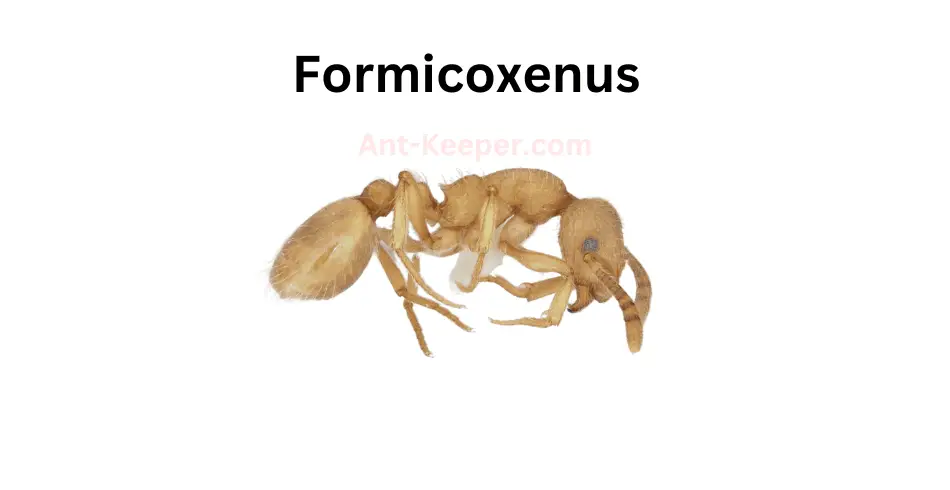
Formicoxenus is a genus of ants belonging to the subfamily Myrmicinae.
The ants in this genus are small in size, measuring between 1.5 to 3 millimeters in length.
They are known for their distinctive morphology, which includes a narrow waist and a large head with long mandibles.
Formicoxenus ants are typically found in forested areas, where they live in small colonies under rocks, logs, or in leaf litter.
They are known to be highly specialized, with each species having a specific host ant species that they parasitize.
The Formicoxenus ants are social parasites, meaning that they rely on their host ants for food and shelter.
The reproductive strategy of Formicoxenus ants is unique.
The queen ant will infiltrate the host colony and kill the resident queen.
She will then lay her eggs in the host colony, which will be raised by the host workers.
The Formicoxenus larvae will then feed on the host ant larvae and pupae, ensuring their survival.
Formicoxenus ants are important members of forest ecosystems, as they play a role in controlling the population of their host ants.
They are also important indicators of forest health, as their presence can indicate the presence of healthy forest ecosystems.
4) Crypt Ants, Hypoponera
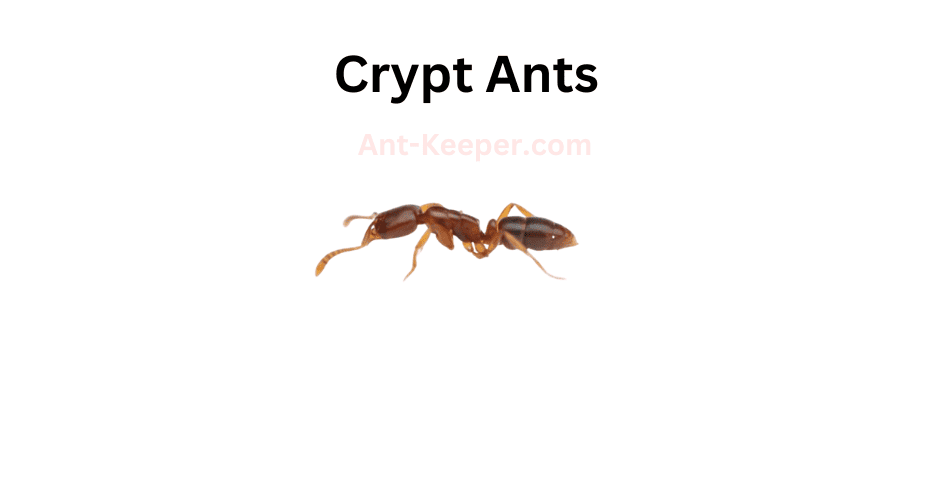
Crypt ants, also known as fungus-growing ants, are a group of ants that cultivate fungi for food.
They are found in various habitats, including forests, grasslands, and deserts.
Crypt ants are known for their unique nesting behavior, as they construct underground chambers to house their fungal gardens.
These ants have a symbiotic relationship with the fungi they cultivate.
The ants provide the fungi with a suitable environment for growth, while the fungi provide the ants with a source of food.
The ants also protect their fungal gardens from other insects and parasites.
Crypt ants are social insects, living in colonies that can range from a few dozen to several thousand individuals.
The colonies are organized into castes, with the queen being the largest and most important member.
The queen is responsible for laying eggs, while the workers are responsible for tending to the fungal gardens and caring for the young.
One interesting aspect of crypt ants is their ability to create "satellite" nests.
These nests are smaller chambers located near the main nest, and they serve as storage areas for food and as a place for the queen to lay eggs.
The satellite nests are connected to the main nest by underground tunnels, allowing the ants to move between them.
Overall, crypt ants are fascinating insects that have developed a unique way of obtaining food.
Their symbiotic relationship with fungi and their complex nesting behavior make them an important species to study in the field of entomology.
5) Moisture Ants, Lasius
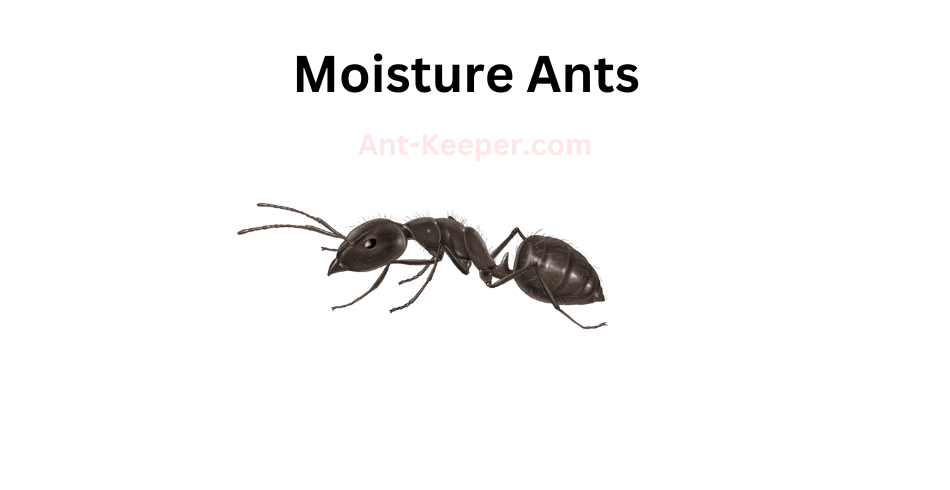
Moisture ants are a type of ant that is commonly found in damp environments.
They are known for their ability to thrive in areas with high levels of moisture, such as in rotting wood or in soil that is constantly moist.
These ants are typically small in size, measuring only a few millimeters in length, and are usually yellow or brown in color.
Moisture ants are social insects that live in colonies, with each colony consisting of a queen, workers, and soldiers.
The queen is responsible for laying eggs, while the workers and soldiers are responsible for maintaining the colony and protecting it from predators.
One of the unique characteristics of moisture ants is their ability to create satellite colonies.
These colonies are established in nearby locations and are connected to the main colony by a network of tunnels.
This allows the ants to expand their territory and increase their chances of survival.
Moisture ants are also known for their ability to control the moisture levels in their environment.
They do this by building intricate nests that are designed to regulate the humidity levels inside.
This is important for the survival of the colony, as too much moisture can lead to the growth of harmful fungi and bacteria.
Overall, moisture ants are fascinating creatures that have adapted to thrive in environments that would be inhospitable to many other species.
Their ability to control moisture levels and create satellite colonies makes them a formidable force in their ecosystem.
6) Leptothorax
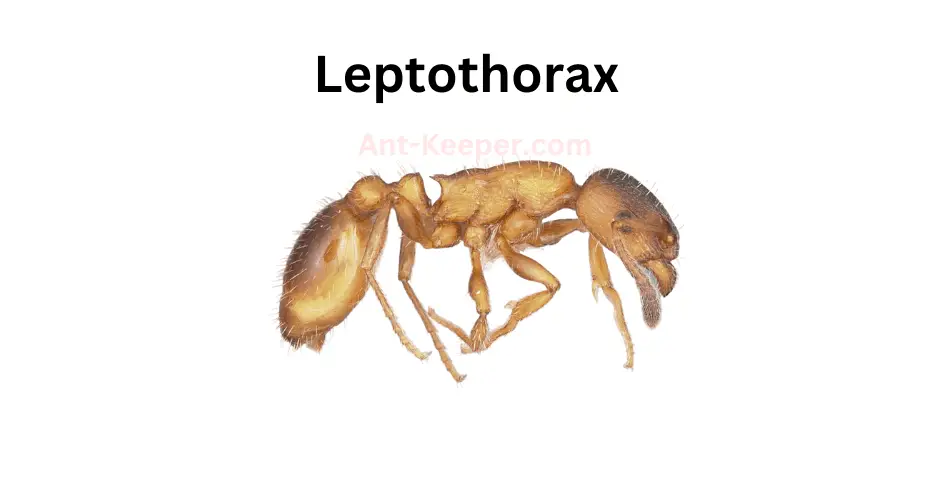
Leptothorax is a genus of ants that belongs to the family Formicidae.
These ants are small in size, measuring between 2 to 4 millimeters in length.
They are commonly found in forests, grasslands, and other natural habitats.
Leptothorax ants are known for their social behavior, as they live in colonies that can range from a few dozen to several hundred individuals.
These ants have a hierarchical social structure, with a queen ant at the top and worker ants at the bottom.
The queen ant is responsible for laying eggs, while the worker ants take care of the young, gather food, and defend the colony from predators.
One interesting feature of Leptothorax ants is their ability to form temporary colonies with other ant species.
This behavior is known as "temporary social parasitism," and it allows Leptothorax ants to benefit from the resources of other ant colonies without having to invest in their own colony infrastructure.
Leptothorax ants are also known for their ability to navigate through complex environments.
They use a combination of visual cues and chemical signals to find their way back to the colony after foraging for food.
Overall, Leptothorax ants are fascinating creatures that play an important role in their ecosystems.
Their social behavior and navigational abilities make them a subject of interest for scientists studying animal behavior and ecology.
7) Trailing Pharaoh And Timid Ants, Monomorium

The Trailing Pharaoh ant, also known as the Monomorium pharaonis, is a small, reddish-brown ant species that is commonly found in urban areas.
These ants are known for their ability to form large colonies, which can consist of thousands of individuals.
One interesting behavior of the Trailing Pharaoh ant is their tendency to trail behind other ants.
This behavior is thought to be a form of communication, as the trailing ants are able to follow the scent trail left by the leading ants.
This behavior is also used to locate food sources, as the trailing ants are able to follow the trail to the source of the food.
In contrast to the bold behavior of the Trailing Pharaoh ant, the Timid ant, also known as the Temnothorax species, is a much more cautious species.
These ants are small and brown, and are often found in wooded areas.
They are known for their timid behavior, and will often retreat into their nests when threatened.
Despite their timid nature, the Timid ant is still able to form large colonies.
They are also known for their ability to adapt to changing environments, and can be found in a variety of habitats, including forests, meadows, and even urban areas.
Overall, both the Trailing Pharaoh ant and the Timid ant are fascinating species that demonstrate unique behaviors and adaptations.
By studying these ants, scientists can gain a better understanding of the complex social behaviors and ecological roles of ants in their respective environments.
8) Mite-Eating Ants, Myrmecina

The Mite-Eating Ant, also known as the Pheidole megacephala, is a species of ant that is commonly found in tropical and subtropical regions around the world.
These ants are known for their unique feeding habits, as they primarily feed on mites and other small arthropods.
The Mite-Eating Ant is a relatively small ant, with workers measuring between 2-3mm in length.
They have a distinctive head shape, with a large and elongated head that is almost as wide as their thorax.
Their bodies are typically a reddish-brown color, with darker legs and antennae.
These ants are highly social, living in large colonies that can contain thousands of individuals.
The colonies are typically divided into two groups: workers and reproductive individuals.
The workers are responsible for foraging for food, caring for the young, and defending the colony, while the reproductive individuals are responsible for producing offspring.
One of the most interesting aspects of the Mite-Eating Ant is their feeding habits.
These ants are specialized predators, feeding almost exclusively on mites and other small arthropods.
They use their large mandibles to capture and kill their prey, and then carry it back to the colony to be consumed.
In addition to their unique feeding habits, the Mite-Eating Ant is also known for its ability to adapt to a wide range of environments.
They are able to thrive in both natural and urban environments, and can be found in a variety of habitats, including forests, grasslands, and even in homes and buildings.
Overall, the Mite-Eating Ant is a fascinating species of ant that has adapted to a unique niche in the ecosystem.
Their specialized feeding habits and ability to thrive in a variety of environments make them an important species to study and understand.
9) Furrowed Ants, Myrmica

Furrowed ants, also known as Pheidole ruginoda, are a species of ant that belong to the family Formicidae.
These ants are commonly found in various habitats such as forests, grasslands, and deserts.
They are known for their distinctive appearance, with a furrowed head and thorax, and a smooth and shiny abdomen.
Furrowed ants are social insects that live in colonies, which can range in size from a few hundred to several thousand individuals.
The colony is typically headed by a queen ant, whose primary role is to lay eggs.
The workers, which are sterile females, are responsible for foraging, nest maintenance, and caring for the young.
These ants are omnivorous, meaning they feed on both plant and animal matter.
Their diet consists of seeds, insects, and other small invertebrates.
They are also known to tend to aphids, which produce a sugary substance that the ants feed on.
Furrowed ants are known for their aggressive behavior, and will defend their colony fiercely against intruders.
They have been observed engaging in territorial battles with other ant species, and will even attack larger insects such as grasshoppers and beetles.
Overall, furrowed ants are an important part of many ecosystems, playing a crucial role in seed dispersal and soil aeration.
Their unique appearance and behavior make them a fascinating subject for study and observation.
10) Amazon Ants, Polyergus
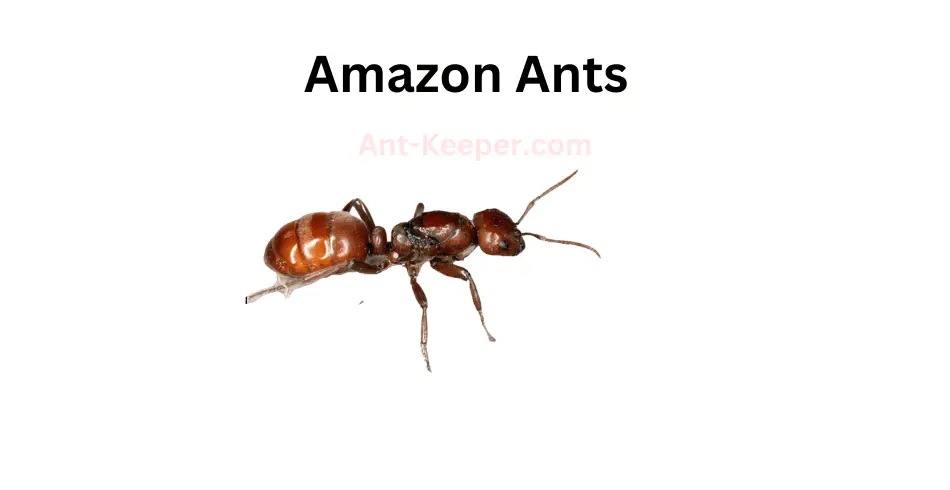
The Amazon Ant, also known as the Polyergus breviceps, is a species of ant that belongs to the Formicidae family.
These ants are known for their unique behavior of raiding other ant colonies and stealing their brood to raise as their own.
The Amazon Ants are typically black or dark brown in color and have a slender body with long legs.
They are relatively small in size, with workers measuring around 4-5 mm in length.
The queen ants are slightly larger, measuring around 7-8 mm in length.
These ants are social insects and live in large colonies that can consist of thousands of individuals.
The colonies are usually divided into different castes, including workers, soldiers, and reproductive ants.
The workers are responsible for foraging, caring for the brood, and maintaining the nest, while the soldiers defend the colony from predators.
One of the most interesting aspects of the Amazon Ants is their unique behavior of raiding other ant colonies.
They do this by sending out a group of specialized workers, known as raiders, to infiltrate the target colony.
The raiders then steal the brood of the target colony and bring it back to their own nest.
Once the stolen brood hatches, the Amazon Ants use it to increase their own workforce.
The Amazon Ants are also known for their symbiotic relationship with a species of butterfly known as the Maculinea rebeli.
The butterfly larvae feed on the brood of the Amazon Ants, but in return, they secrete a substance that makes the ants more aggressive and better at raiding other colonies.
Overall, the Amazon Ants are fascinating creatures with unique behaviors and adaptations that allow them to thrive in their environment.
11) Porthole Ants, Ponera
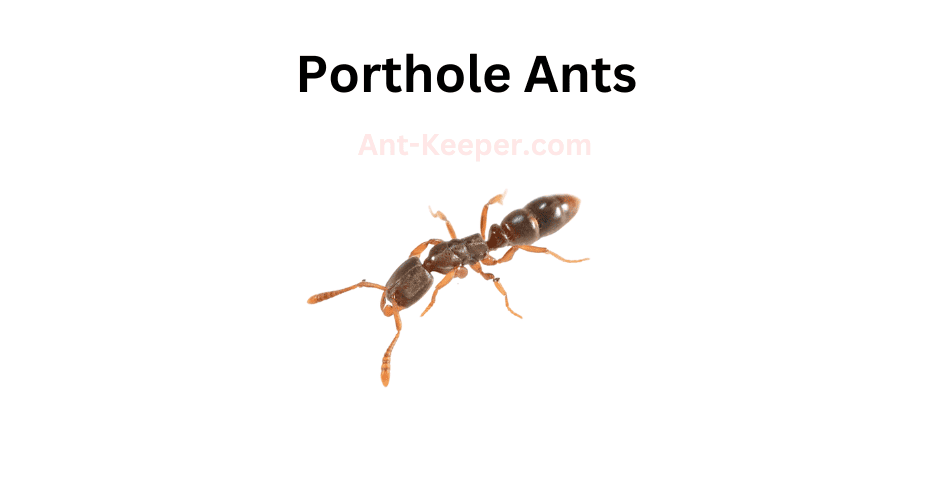
Porthole ants, also known as Temnothorax spp., are a genus of small ants that are commonly found in forested areas.
These ants are known for their unique nesting behavior, as they create their nests in small cavities or "portholes" in trees, rocks, or other natural structures.
Porthole ants are typically less than 5mm in length and have a dark brown or black coloration.
They are social insects and live in colonies that can range from a few dozen to several hundred individuals.
The colonies are typically led by a single queen, who is responsible for laying eggs and maintaining the colony's reproductive population.
One of the most interesting aspects of porthole ants is their nesting behavior.
Unlike many other ant species, porthole ants do not create large underground nests.
Instead, they seek out small cavities in natural structures and use them as their nesting sites.
These cavities can be as small as a few millimeters in diameter and are often located high up in trees or on rocky outcroppings.
Porthole ants are also known for their ability to adapt to changing environmental conditions.
They are able to quickly relocate their nests if their current nesting site becomes unsuitable due to factors such as flooding or predation.
This adaptability allows them to thrive in a variety of habitats, from temperate forests to arid deserts.
Overall, porthole ants are a fascinating and unique species of ant that have adapted to their environment in a variety of ways.
Their nesting behavior and adaptability make them an important species to study for understanding the ecology of forested areas.
12) Winter Ants, Prenolepis

Winter ants, also known as Formica exsectoides, are a species of ant that are commonly found in temperate regions.
These ants are known for their ability to survive harsh winter conditions, which is where they get their name from.
Winter ants are typically black or dark brown in color and can range in size from 4 to 8 millimeters in length.
They are social insects and live in large colonies that can contain thousands of individuals.
These colonies are typically located underground, where the ants construct elaborate tunnels and chambers.
One of the most interesting things about winter ants is their ability to survive the cold winter months.
Unlike many other ant species, winter ants do not hibernate during the winter.
Instead, they have developed a number of adaptations that allow them to survive in the cold.
One of these adaptations is the ability to regulate their body temperature.
Winter ants are able to generate heat by shivering their muscles, which allows them to maintain a temperature of around 25 degrees Celsius even when the outside temperature drops below freezing.
Winter ants also have a unique diet that helps them survive the winter.
They feed on the honeydew produced by aphids, which is a sugary substance that provides them with the energy they need to survive.
Overall, winter ants are a fascinating species of ant that have adapted to survive in some of the harshest conditions on earth.
Their ability to regulate their body temperature and feed on a unique diet make them a truly remarkable species.
13) Fire Ants, Solenopsis
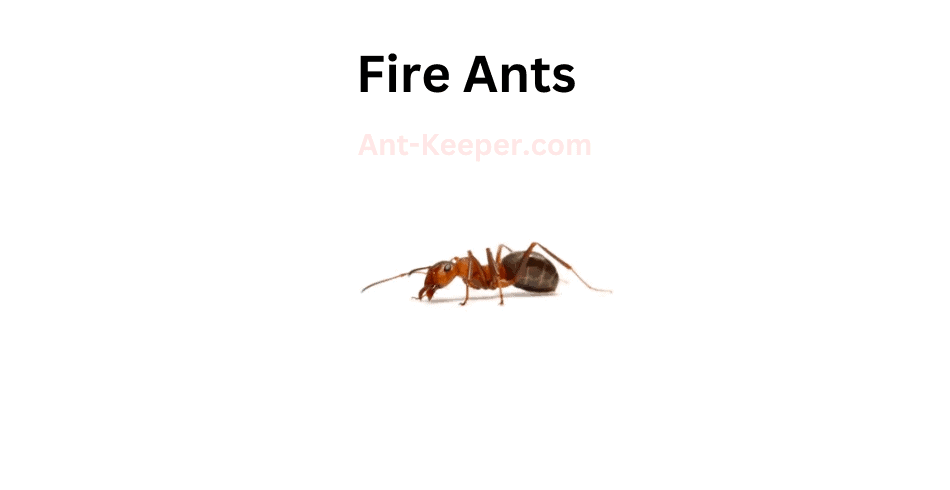
Fire ants are a type of ant that belongs to the Solenopsis genus.
They are known for their reddish-brown color and their aggressive behavior.
Fire ants are social insects that live in colonies, which can range in size from a few hundred to several thousand individuals.
Fire ants are omnivorous and feed on a variety of foods, including insects, seeds, and other small animals.
They are also known to scavenge for food and will often invade other ant colonies to steal their resources.
One of the most distinctive features of fire ants is their ability to sting.
They have a stinger located at the end of their abdomen, which they use to inject venom into their prey or enemies.
Fire ant stings can be painful and can cause an allergic reaction in some people.
Fire ants are also known for their ability to build large mounds, which can reach heights of up to 18 inches.
These mounds are made of soil and are used as a nesting site for the colony.
Fire ants are considered to be an invasive species in many parts of the world, as they can cause damage to crops and wildlife.
They are also a nuisance to humans, as their stings can be painful and their mounds can be unsightly.
Overall, fire ants are fascinating insects that have adapted to thrive in a variety of environments.
While they can be a nuisance, they are an important part of the ecosystem and play a vital role in controlling insect populations.
14) Leaf-Litter Ants, Stenamma

Leaf-litter ants are a group of ants that are commonly found in forested areas around the world.
They are known for their ability to live and forage in the leaf litter layer of the forest floor, where they play an important role in nutrient cycling and soil health.
Leaf-litter ants are typically small in size, ranging from 1-5mm in length.
They are often reddish-brown or black in color, and have a slender, elongated body shape.
These ants are social insects, living in colonies that can range in size from a few dozen to several thousand individuals.
One of the key characteristics of leaf-litter ants is their ability to forage for food in the leaf litter layer.
They are known to feed on a variety of organic matter, including dead insects, fungi, and plant material.
Leaf-litter ants are also important decomposers, breaking down organic matter and returning nutrients to the soil.
In addition to their role in nutrient cycling, leaf-litter ants also play an important role in the ecosystem as prey for other animals.
They are a food source for a variety of predators, including birds, reptiles, and other insects.
Overall, leaf-litter ants are an important and fascinating group of insects that play a critical role in maintaining the health and functioning of forest ecosystems around the world.
15) Strongylognathus

Strongylognathus is a genus of ants that belongs to the subfamily Myrmicinae.
The ants in this genus are small in size, measuring between 2 to 3 millimeters in length.
They are known for their distinctive mandibles that are long and slender, which they use to capture prey and defend their colony.
The Strongylognathus ants are typically found in forested areas, where they build their nests in soil or leaf litter.
They are known to be highly territorial and aggressive towards other ant species that invade their territory.
The ants in this genus are also known to be omnivorous, feeding on a variety of food sources including insects, nectar, and honeydew.
One of the most interesting features of the Strongylognathus ants is their ability to communicate with each other through the use of pheromones.
These chemical signals are used to mark trails, identify nestmates, and coordinate foraging activities.
The ants in this genus are also known to exhibit a high degree of social organization, with a clear division of labor among the different castes.
Overall, the Strongylognathus ants are fascinating creatures that play an important role in their ecosystem.
Their unique physical and behavioral characteristics make them a subject of interest for scientists and nature enthusiasts alike.
16) Tapinoma
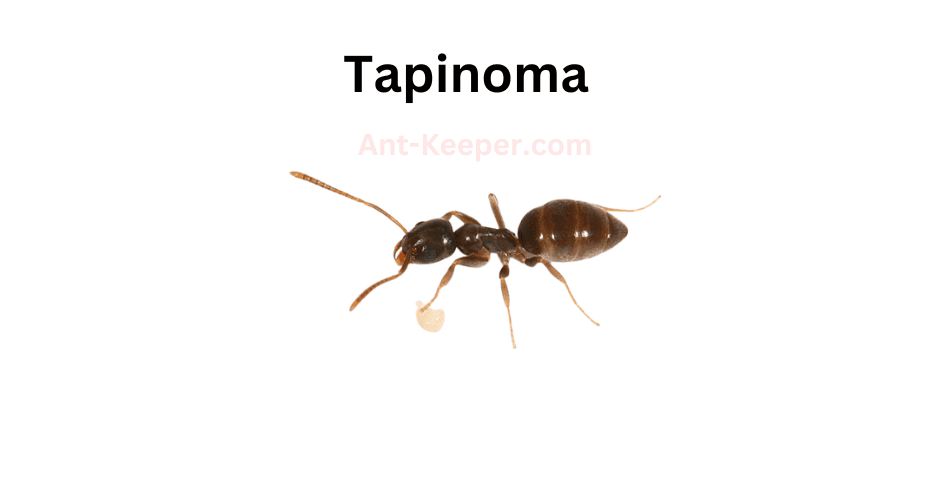
Tapinoma is a genus of ants that belongs to the family Formicidae.
The species Tapinoma is a small ant that measures about 2-3 mm in length.
They are commonly found in urban and suburban areas, and are known to invade homes and buildings in search of food and shelter.
Tapinoma ants are light brown in color and have a slender body with long legs.
They have a distinctively shaped head that is wider than their thorax, and they possess a pair of antennae that are bent at a right angle.
These ants are known for their ability to form large colonies, which can consist of thousands of individuals.
Tapinoma ants are omnivorous and feed on a variety of food sources, including insects, nectar, and honeydew.
They are also known to scavenge for food in garbage cans and other waste areas.
These ants are attracted to sweet and sugary substances, and will often invade kitchens and pantries in search of food.
Tapinoma ants are not known to be aggressive towards humans, but they can become a nuisance when they invade homes and buildings.
They are known to build their nests in wall voids, under floors, and in other hidden areas.
If left unchecked, these ants can cause damage to structures and can contaminate food sources.
Overall, Tapinoma ants are a common pest in many parts of the world.
While they are not harmful to humans, they can be a nuisance when they invade homes and buildings.
Proper pest control measures can help to prevent infestations and keep these ants at bay.
17) Slave-Making Ants, Temnothorax

The Slave-Making Ants, also known as Dulosis ants, are a group of social insects that engage in a unique behavior of raiding and enslaving other ant colonies.
These ants belong to the subfamily Formicinae and are found in various parts of the world.
The Slave-Making Ants have a complex social structure, with a queen, workers, and soldiers.
The queen is responsible for laying eggs, while the workers and soldiers carry out various tasks such as foraging, nest building, and defense.
However, unlike other ant species, the Slave-Making Ants do not rely solely on their own colony for survival.
Instead, these ants raid nearby colonies of other ant species, using their superior strength and numbers to overpower the defenders.
The Slave-Making Ants then carry off the pupae of the conquered colony back to their own nest.
Once the pupae hatch, they are raised by the Slave-Making Ants and forced to work as slaves for the colony.
The Slave-Making Ants have evolved a number of adaptations to facilitate their slave-raiding behavior.
For example, they have a highly developed sense of smell, which allows them to locate and target specific ant colonies.
They also have strong mandibles and powerful stingers, which they use to subdue their prey.
Despite their aggressive behavior, the Slave-Making Ants play an important role in their ecosystem.
By raiding other ant colonies, they help to control the population of competing ant species.
Additionally, the enslaved ants provide a source of food and labor for the Slave-Making Ants, allowing them to thrive in environments where resources are scarce.
Overall, the Slave-Making Ants are a fascinating and unique species of ant, with a complex social structure and a highly specialized behavior.
While their slave-raiding behavior may seem cruel, it is an important part of their survival strategy and has helped them to thrive in a variety of environments.
18) Pavement Ants, Tetramorium
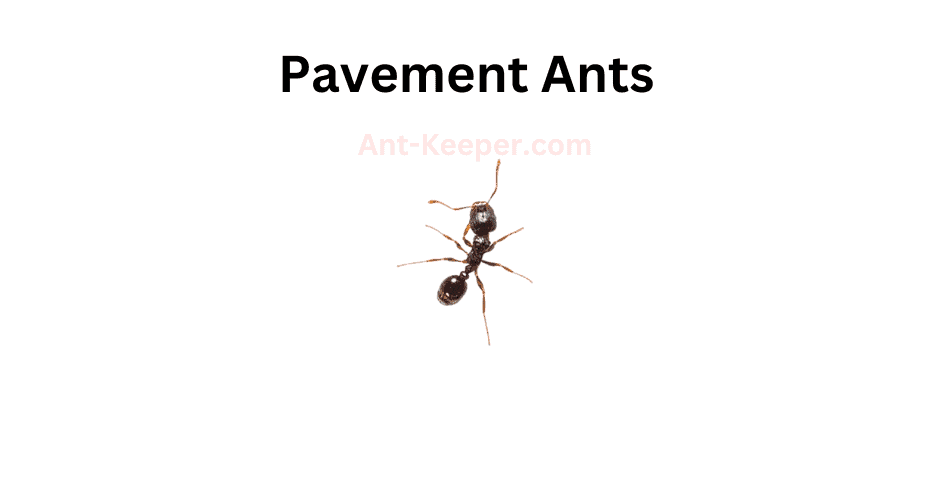
Pavement ants, also known as Tetramorium caespitum, are a species of ant that belong to the family Formicidae.
These ants are commonly found in urban and suburban areas, where they build their nests in cracks and crevices in pavement, sidewalks, and buildings.
Pavement ants are small in size, measuring between 2.5 to 4 mm in length.
They are typically dark brown or black in color, with lighter colored legs and antennae.
These ants are known for their aggressive behavior and will defend their nests fiercely against intruders.
Pavement ants are omnivorous, feeding on a variety of foods including insects, seeds, and sweet substances such as honeydew and nectar.
They are also known to scavenge for food in garbage cans and other waste areas.
Pavement ants are social insects, living in colonies that can range in size from a few hundred to several thousand individuals.
The colony is typically led by a queen ant, who is responsible for laying eggs and maintaining the colony.
Pavement ants are considered a nuisance pest, as they can invade homes and buildings in search of food and shelter.
They are also known to cause damage to pavement and other structures by excavating soil and creating tunnels.
Overall, pavement ants are a common and adaptable species of ant that play an important role in urban ecosystems.
While they may be a nuisance to humans, they are an important food source for many other animals and help to maintain the balance of the ecosystem.
19) Silky Ants, Formica Fusca
Silky ants, also known as velvet ants, are a type of solitary wasp that belong to the family Mutillidae.
They are found in various habitats such as forests, deserts, and grasslands.
These ants are known for their striking appearance, with their bright colors and dense, velvety hair covering their bodies.
Silky ants are typically between 0.5 to 1.5 inches in length and have a distinct, elongated body shape.
They have a tough exoskeleton that protects them from predators and environmental stressors.
Their bright colors, which can range from red to orange to black, serve as a warning to potential predators that they are venomous and should be avoided.
Despite their name, silky ants do not actually belong to the ant family.
They are wingless females that resemble ants in their appearance and behavior.
The males, on the other hand, have wings and are often mistaken for bees.
Silky ants are known for their painful sting, which is used to defend themselves from predators.
Their venom is potent and can cause intense pain, swelling, and even anaphylactic shock in some individuals.
However, they are not aggressive and will only sting if provoked or threatened.
Silky ants are important pollinators and play a crucial role in maintaining the ecological balance of their habitats.
They feed on nectar and pollen from flowers and help to transfer pollen from one plant to another, aiding in the reproduction of various plant species.
In conclusion, silky ants are fascinating creatures that are both beautiful and dangerous.
Their unique appearance and behavior make them a valuable addition to the natural world.
20) Yellow Meadow Ants, Lasius Flavus
Yellow Meadow Ants, also known as Lasius flavus, are a species of ant that belong to the Formicidae family.
They are commonly found in meadows, grasslands, and other open areas with well-drained soil.
These ants are small in size, measuring between 3-5mm in length, and have a yellowish-brown coloration.
Yellow Meadow Ants are social insects that live in colonies consisting of a queen, male ants, and worker ants.
The queen is responsible for laying eggs, while the worker ants are responsible for foraging for food, caring for the young, and defending the colony.
The male ants are responsible for mating with the queen.
These ants are omnivorous, meaning they feed on both plant and animal matter.
They primarily feed on honeydew, a sweet substance produced by aphids and other insects, as well as other insects and small invertebrates.
Yellow Meadow Ants are also known to cultivate and protect aphids, which they use as a source of food.
Yellow Meadow Ants are important members of their ecosystem, as they help to aerate the soil and control the populations of other insects.
They are also preyed upon by a variety of animals, including birds, spiders, and other insects.
Overall, Yellow Meadow Ants are fascinating creatures that play an important role in their environment.
Their social behavior and unique adaptations make them a valuable subject of study for scientists and nature enthusiasts alike.
21) Black Garden Ants, Lasius Niger
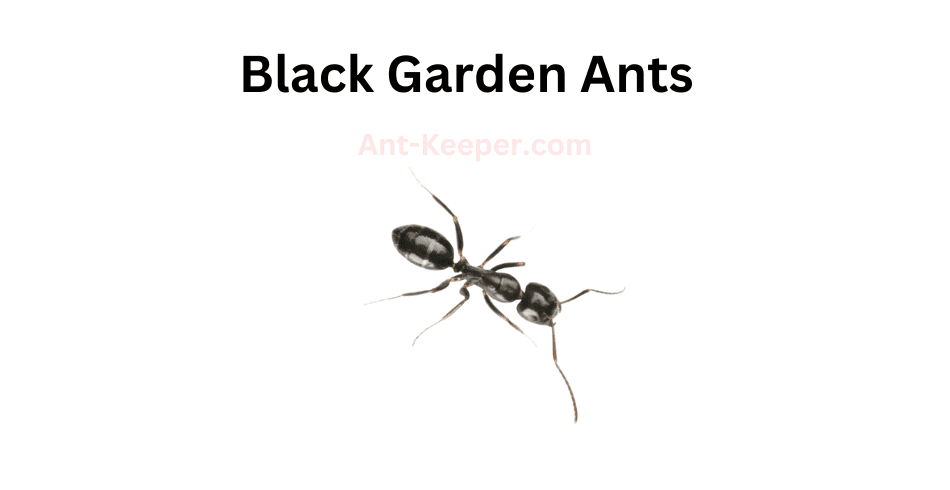
The Black Garden Ant, also known as Lasius niger, is a common species of ant found in many parts of the world.
These ants are typically black or dark brown in color and range in size from 2.5 to 4 mm in length.
Black Garden Ants are social insects that live in large colonies, which can contain thousands of individuals.
The colony is typically led by a queen ant, who is responsible for laying eggs and producing new workers.
The workers are responsible for foraging for food, caring for the young, and defending the colony from predators.
These ants are omnivorous and will eat a variety of foods, including insects, nectar, and honeydew.
They are also known to farm aphids, which they protect and feed in exchange for the sweet honeydew they produce.
Black Garden Ants are important members of their ecosystem, as they help to aerate soil and control populations of other insects.
However, they can also be considered pests when they invade homes and gardens in search of food and shelter.
Overall, the Black Garden Ant is a fascinating and important species of ant that plays a vital role in many ecosystems around the world.
22) Leptothorax Acervorum
Leptothorax acervorum is a species of ant belonging to the family Formicidae.
These ants are commonly found in temperate regions and are known for their small size, measuring only 2-3 mm in length.
They have a dark brown or black coloration and a slender body shape.
Leptothorax acervorum ants are social insects that live in colonies consisting of hundreds or thousands of individuals.
They are known for their cooperative behavior and division of labor within the colony.
The queen ant is responsible for laying eggs, while the worker ants take care of the young, gather food, and defend the colony.
These ants are omnivorous and feed on a variety of food sources, including insects, nectar, and honeydew.
They are also known to tend to aphids, which produce honeydew that the ants consume.
Leptothorax acervorum ants are important members of their ecosystem, playing a role in seed dispersal and soil aeration.
They are also used as model organisms in scientific research, particularly in the study of social behavior and communication.
Overall, Leptothorax acervorum ants are fascinating creatures that play an important role in their environment and provide valuable insights into the behavior of social insects.
23) Furrowed Ants, Myrmica Rubra

Furrowed ants, also known as Pheidole ruginoda, are a species of ant that belong to the family Formicidae.
These ants are commonly found in various habitats such as forests, grasslands, and deserts.
They are known for their distinctive appearance, with a furrowed head and thorax, and a smooth and shiny abdomen.
Furrowed ants are social insects that live in colonies, which can range in size from a few hundred to several thousand individuals.
The colony is typically headed by a queen ant, whose primary role is to lay eggs.
The workers, which are sterile females, are responsible for foraging, nest maintenance, and caring for the young.
These ants are omnivorous, meaning they feed on both plant and animal matter.
Their diet consists of seeds, insects, and other small invertebrates.
They are also known to tend to aphids, which produce a sugary substance that the ants feed on.
Furrowed ants are known for their aggressive behavior, and will defend their colony fiercely against intruders.
They have been observed engaging in territorial battles with other ant species, and will even attack larger insects such as grasshoppers and beetles.
Overall, furrowed ants are an important part of many ecosystems, playing a crucial role in seed dispersal and soil aeration.
Their unique appearance and behavior make them a fascinating subject for study and observation.
24) Furrowed Ants, Myrmica Scabrinodis

Furrowed ants, also known as Pheidole ruginoda, are a species of ant that belong to the family Formicidae.
These ants are commonly found in various habitats such as forests, grasslands, and deserts.
They are known for their distinctive appearance, with a furrowed head and thorax, and a smooth and shiny abdomen.
Furrowed ants are social insects that live in colonies, which can range in size from a few hundred to several thousand individuals.
The colony is typically headed by a queen ant, whose primary role is to lay eggs.
The workers, which are sterile females, are responsible for foraging, nest maintenance, and caring for the young.
These ants are omnivorous, meaning they feed on both plant and animal matter.
Their diet consists of seeds, insects, and other small invertebrates.
They are also known to tend to aphids, which produce a sugary substance that the ants feed on.
Furrowed ants are known for their aggressive behavior, and will defend their colony fiercely against intruders.
They have been observed engaging in territorial battles with other ant species, and will even attack larger insects such as grasshoppers and beetles.
Overall, furrowed ants are an important part of many ecosystems, playing a crucial role in seed dispersal and soil aeration.
Their unique appearance and behavior make them a fascinating subject for study and observation.
25) Immigrant Pavement Ants, Tetramorium Caespitum
The Immigrant Pavement Ant (Tetramorium immigrans) is a species of ant that belongs to the family Formicidae.
These ants are commonly found in urban areas and are known for their ability to adapt to different environments.
They are small in size, measuring between 2.5 to 3.5 mm in length, and have a dark brown or black coloration.
The Immigrant Pavement Ants are known for their aggressive behavior towards other ant species and their ability to form large colonies.
They are also known for their ability to survive in harsh conditions, such as extreme temperatures and droughts.
These ants are omnivorous and feed on a variety of food sources, including insects, seeds, and sugary substances.
The reproductive system of the Immigrant Pavement Ants is unique, as they have multiple queens in a single colony.
This allows for the colony to grow rapidly and expand their territory.
The queens are responsible for laying eggs, while the workers are responsible for caring for the young and maintaining the colony.
The Immigrant Pavement Ants are considered a nuisance pest in urban areas, as they often invade homes and buildings in search of food and shelter.
They can also cause damage to pavement and concrete structures by excavating soil and creating tunnels.
Overall, the Immigrant Pavement Ants are a fascinating species of ant that have adapted to survive in urban environments.
Their ability to form large colonies and their aggressive behavior towards other ant species make them a unique and interesting species to study.
Check Out Some Of Our Other Ants By Location Posts
| Types Of Ants In Panama | Nestled between Costa Rica and Colombia, Panama is a country located in Central America. The region is known for its diverse and unique environment, which ... |
| Types Of Ants In French Guiana | Nestled on the northeastern coast of South America lies French Guiana, a region that is often overlooked by travelers seeking adventure. Despite its small size, ... |
| Types Of Ants In Utah, United States | Utah, located in the western region of the United States, is a state known for its diverse and stunning natural landscapes. From the towering peaks ... |
| Types Of Ants In Shandong, China | Shandong, located in eastern China, is a region known for its diverse and unique environment. With a coastline stretching over 3,000 kilometers, Shandong boasts a ... |
| Types Of Ants In Anhui, China | Anhui, a province located in eastern China, is known for its diverse landscape and unique climate. The region is home to a variety of animals, ... |
